
He spent several days forcibly locked in a rice box before finally dying. Born Crown Prince Jangheon, his father allowed him to manage the affairs of the state because of his smarts. Although he was never actually king, he was the victim of a political conspiracy from the rival Old Doctrine faction. It wasn't until after his death that he was named Crown Prince Sado by King Yeongjo (his father), and later named Emperor Jangjo by then-Emperor Gojong in 1899.
One bright note for our multi-named friend is his son, who became King Jeongjo. After becoming king in 1776, he used a policy called Tangpyeongchaek (蕩平策, or a policy to balance the power of political factions). If you've visited Hwaseong Fortress in Suwon, this was the man who dreamed of moving the capital of the country from present-day Seoul to Hwaseong. Beyond his fortress-building ambitions, he did everything he could to appease his father's spirits, which were believed to be vindictive because he was killed before his prime. He set up the nearby Yongjusa, and used the temple to pray for his father's spirits. Arguably, King Jeongjo is one reason Koreans know more than a few stories of filial piety, or the respect shown to parents and ancestors.
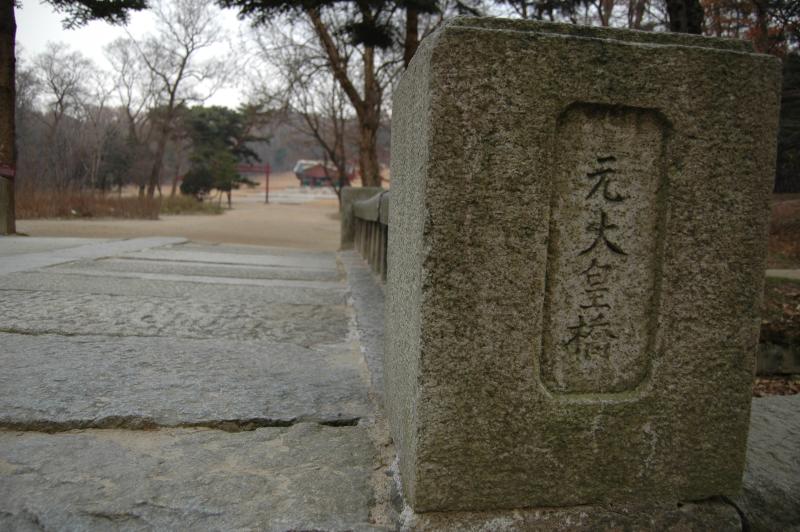
Crossing the 금천교 (geum-cheon-gyo), or the bridge over a stream, is a ceremonial cleaner.
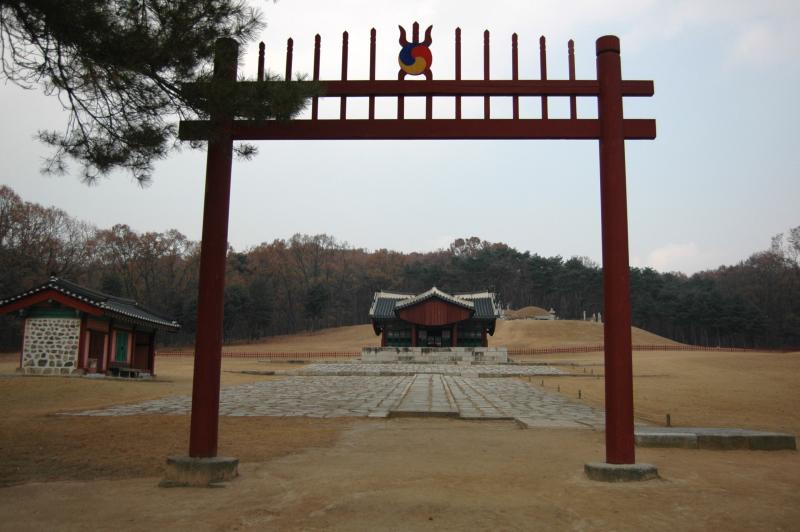
The red-spiked gate is a 홍살문 (hong-sal-mun), and a reminder that this area is important. All tombs will have the two-level raised path (신도 and 어도, or sin-do and eo-do) for the gods and the king, respectively. The two tombs here both have a larger area covered with stones for ceremonies - a reminder that these tombs followed the same guidelines, but still differ from one to another. Don't walk on the higher path - that's where the gods 'walk' even today. Instead, walk on the path to the right.

The 정자각 (jeong-ja-gak), or the building where memorial services were held - a straight shot down that stone walkway.
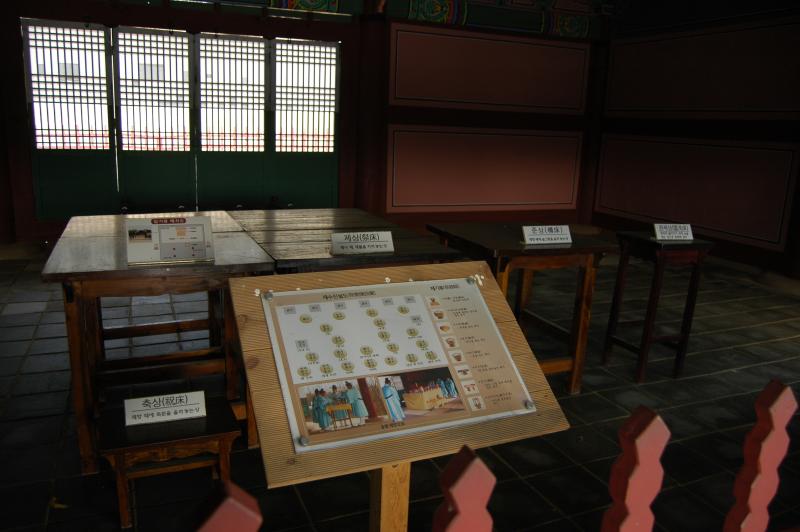
Inside is a description of how the tables were set up for the memorial ceremonies - dozens of different dishes to make sure they're fed well in the afterlife.
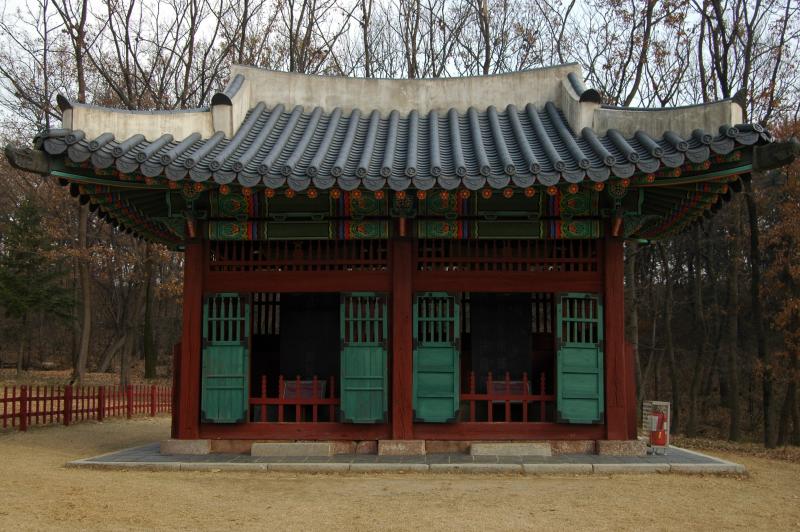
The 비각 (bi-gak), also called the stele shed. The building houses a tablet for each person buried at that tomb.
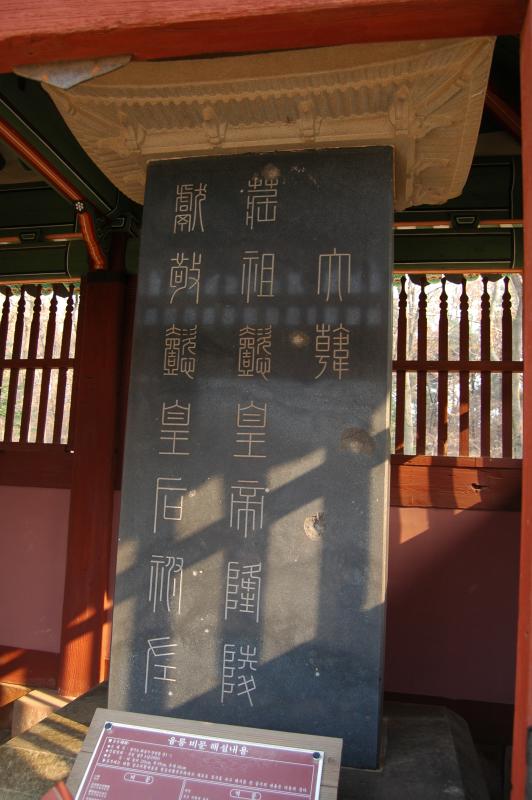
The front of the tablet shows the person's name, while the back shows their accomplishments or biography. The back is hard to see as a tourist, but unless you can read the ancient Chinese, just stick to the Korean translation. I wish there was an translation to English, but off-the-beaten-paths don't always get that sort of treatment.
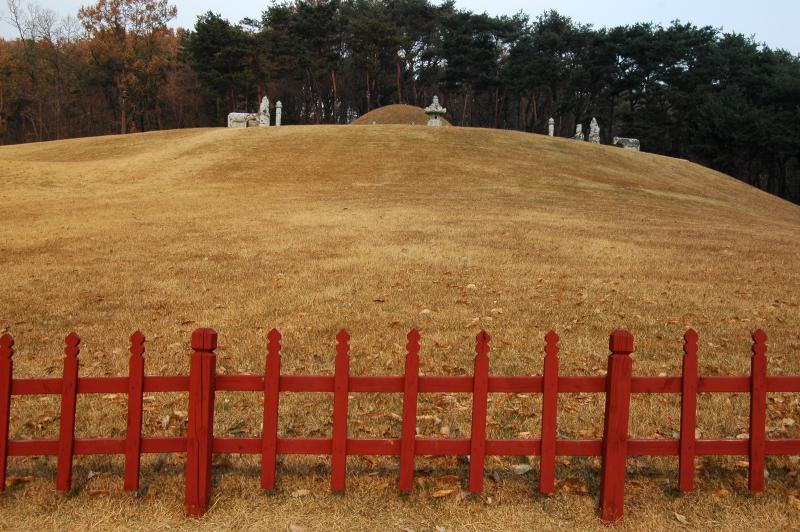
Most tombs have a fence around the grave area, and this one's no exception. While a few tombs allow you to get closer to the statues, you'll have to admire this one from some distance.
One tomb down, one to go - since there's plenty of nature to go around, several walking trails go around the tomb and through the woods. They're all connected to each other, so you're not going to get lost or off on some other trails.
While walking through the forest, you'll notice a number of species: Needle fir, Korean alder, and Zelkova trees are just a few of them. It's a rather pleasant walk, and you're far enough away from the road that the car sounds are muffled. You'll notice the other tomb is further away from civilization, which might be the reason I seemed to see more people coming from this area than the other.
Once you arrive at the tomb of Geolleung, you'll notice many of the same features:
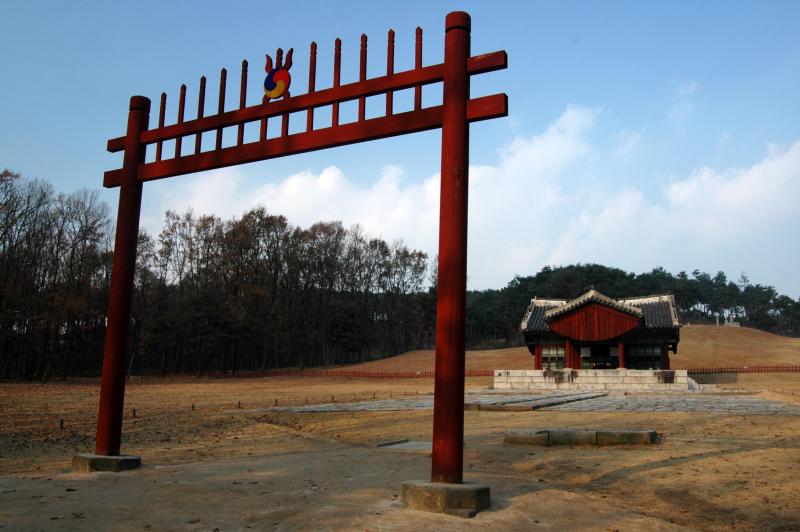
The same 홍살문 (hong-sal-mun) as at other Joseon Dynasty tombs.
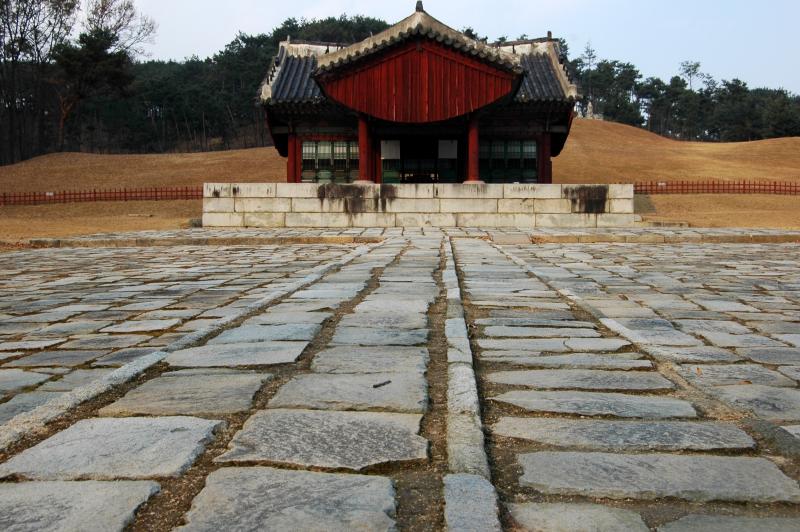
The same 정자각 (jeong-ja-gak), or the building where the memorial services are held.
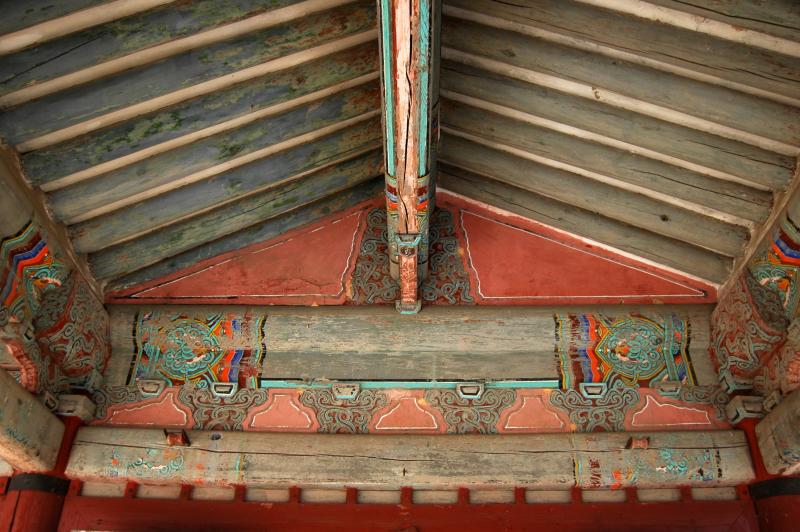
It's been awhile since it got a paint job, though I sort of like it that way. The Lady in Red prefers them freshly painted and brightly colored - the way they were meant to be seen.
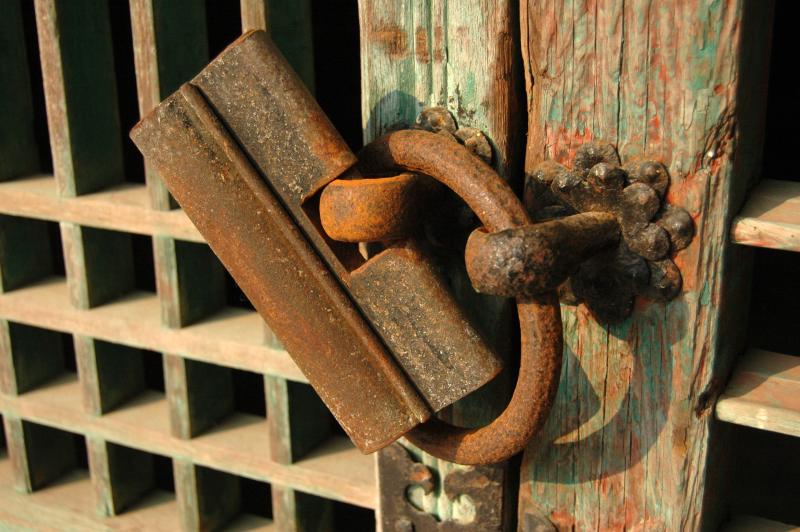
There was just something about the rusted - but still working - lock in the sunlight that was captivating. Although it has a practical use, it's more for show since the main entryway of the 정자각 (jeong-ja-gak) was open for anyone to see.
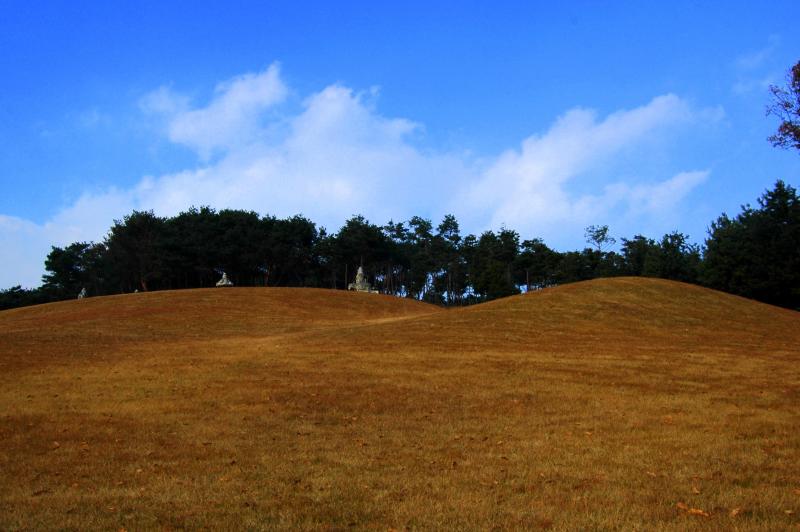
The tomb on the left, with a natural hill on the right - a reminder that locations were carefully chosen, and the area disturbed as little as possible.
Like other Joseon-Dynasty tombs, it claims its rightful 'UNESCO World Heritage Site' by the entrance, and offers enough natural beauty to make it worth the visit. It's probably best visited in the spring or fall (mid-November being a bit late to see the leaves in full color), but could also be an interesting trek in the winter.
Ratings (out of 5 taeguks): (How do I rate destinations?)
Ease to arrive:
Convenience facilities:
Worth the visit:
Directions to Yungneung and Geolleung: Get to Byeongjeom station (line 1 on the Seoul subway system). Take exit 2 to street level, then walk to the road and turn right to find the bus stop. DO NOT CROSS THE ROAD. Transfer to bus 34, 34-1, 44, or 50. Get off about 10-15 minutes later at the Yunggeolleung (융건릉) bus stop. Note how the two tombs get combined into one word?
1,000 won admission; open from 9am to 6:30pm (March to October) or 5:30pm (November to February). Ticket sales end one hour earlier either way. For more information, check out Visit Korea's page, or the detailed description from Korea's Cultural Heritage Administration.
 © Chris Backe - 2010
© Chris Backe - 2010This post was originally published on my blog,Chris in South Korea. If you are reading this on another website and there is no linkback or credit given, you are reading an UNAUTHORIZED FEED.






 RSS Feed
RSS Feed
Recent comments